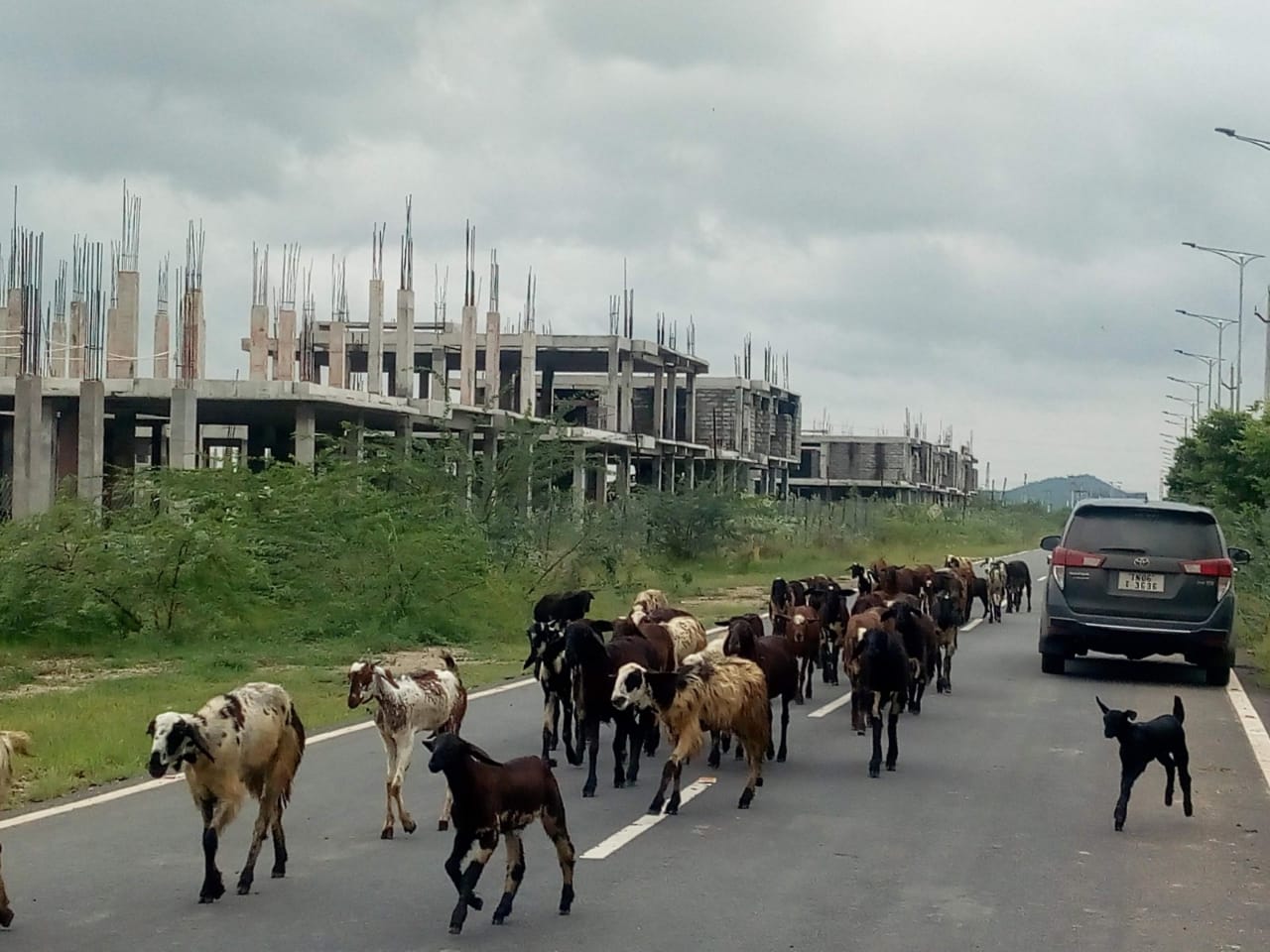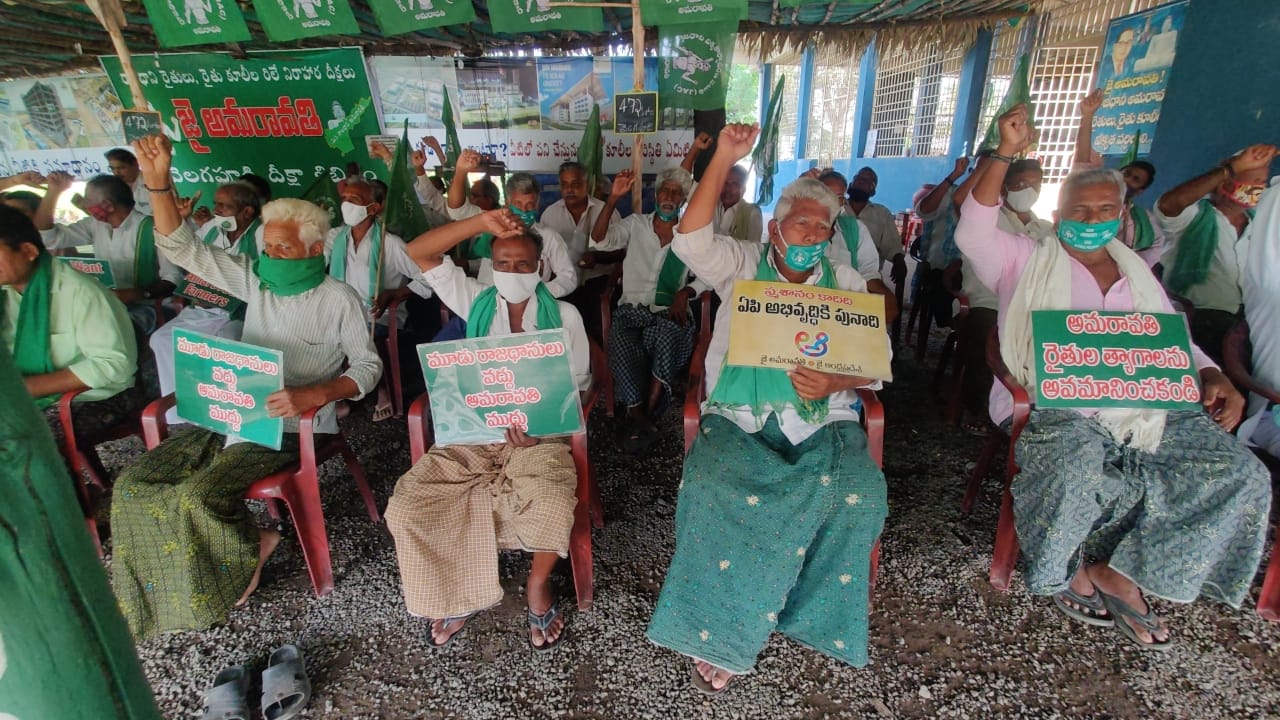
Amaravati was going to be the pride of Andhra. It is now a ‘ghost city’
The high-rise office and residential complexes are half-built and deserted. Thorny bushes and brushy weeds grow unchecked. Cattle graze. There is hardly any human activity. This is what Amaravati looks like as one drives down the vast lanes. Secretariat staff come at 9 and leave at 5. Ministers are rarely seen

Part 1: Capital city dream shattered, Amaravati farmers left in penury
The high-rise office and residential complexes are half-built and deserted. Thorny bushes and brushy weeds grow unchecked. Cattle graze. There is hardly any human activity. This is what Amaravati looks like as one drives down the vast lanes. Secretariat staff come at 9 and leave at 5. Ministers are rarely seen.
True to the description of Panchayat Raj and Urban Development Minister Botcha Satyanarayana, Amaravati looks like a ‘ghost city’.
As thousands of farmers who provided land for a dream capital sit in tents protesting against the government’s plan to relocate the crucial executive and judicial capitals to Visakhapatnam and Kurnool, respectively, the structures built at Amaravati are crumbling.
Former chief minister N Chandrababu Naidu, who left office in May 2019, claims his government spent ₹9,060 crore on the development of the capital. Botcha claims the figure is closer to ₹5,674 crore.
In November 2020 the Andhra Pradesh High Court asked the accountant general (AG) for a detailed account of the spending. The court was dealing with various public interest litigations filed by farmers and others against the decision to relocate parts of the capital.
The HC asked the AG to furnish details of expenditure, work completed, the amount required for completion of the pending structures and possible losses due to abrupt discontinuation of work.
When the project was planned, Amaravati was to have nine cities, around themes of governance (administration), justice (judiciary), finance, knowledge, tourism, electronics, health, sports and media, spread across 217 square kilometres.
The secretariat, legislative assembly and council, and high court are already open. However, the chief minister operates from his office around 8 kilometres from the secretariat.

The HC, which is spread over 48 acres, has 28 court halls and offices. Work on 73 bungalows (38 for judges, 35 for ministers) was discontinued after 70 to 80 per cent completion. Same was the fate of 288 quarters for MLAs and MLCs and 144 bureaucrats’ residential complexes. Work on a dozen towers was abandoned. Work on 144 homes for all India service officers was 90 per cent complete when orders came to drop tools. The contractors took away material and equipment before leaving the place. They are now waiting for payment.
Except for water, power, and drainage connections, homes for 5,200 families from weaker sections of society are ready.
In March Chief Minister YS Jagan Mohan Reddy reviewed the project and directed officials to complete pending construction by mobilising ₹3,000 crore through loans.
More than 29,000 farmers from 29 villages gave close to 33,500 acres for the capital under the unique land pooling scheme introduced by Chandrababu Naidu in 2015.
The YSR Congress Party, which came to power in May 2019, said the new capital belonged to people of only one particular caste, the Kammas, to which Naidu belongs.
However, statistics show that Inavolu Rayapudi and Errabalem villages, which come under Amaravati, are dominated by the Kapu community, and Penumaka and Errabalem have considerable population of Reddys.
Vishnumolakala Subba Rao and his family (Kapus) are said to have given 140 acres of land for the capital – the biggest chunk.
Why Amaravati Matters?
An exclusive and well-planned capital city has always eluded the Telugus. The only time the capital city was located within the geographical bounds of Andhra region was about 1,500 years ago, during the regime of Vishnukundini kings. The capital city was briefly located in Vijayawada and later at Amaravati village in the vicinity of Vijayawada. The first Andhra kings were the Satavahanas, who ruled from what now forms the Nizamabad district in Telangana. Then came Chalukyas, Kakatiyas, Vijayanagara rulers, Qutub Shahis and the British. During all these eras, the capital was located outside the geographical area. For instance, during the Kakatiya period, the capital city was Warangal (in Telangana). During the Qutub Shahi period the capital city was Hyderabad (Golconda). When the British came the capital was at Madras (Chennai). After the formation of Andhra Pradesh the capital was moved to Hyderabad, though Kurnool briefly enjoyed the honour. Telugus wanted a capital city within their geographical area. That was the impulse behind Naidu’s decision to build a capital city at Amaravati – the core of Andhra Pradesh and the cradle of Andhra and Telugu civilisation.
Land Pooling Scheme
The Capital Region Development Authority (CRDA) signed agreements with farmers under a unique land pooling scheme conceived by Naidu in 2015. The scheme aimed at arranging land for the capital without any spending by the exchequer. The pooling scheme was based on a win-win formula. The government would develop the land given by the farmers, keep a chunk of it and return 1,250 to 1,450 square yards of developed portion to the farmers. The farmers would get several times more than what they would get if they sold their agricultural land. The Union government gave capital gains tax exemption to these farmers as a special case.
Annuity Delayed
Through the CRDA, the previous government gave the farmers assurance that it would pay ₹50,000 annuity, with 10 per cent increment every year for ten years, to compensate the losses they make by giving up cultivation. The farmers got the amounts credited to their bank accounts every April till 2019. Last year, the government paid the money in August. “The government was reluctant but, after the court’s intervention, it paid,” one farmer said.

